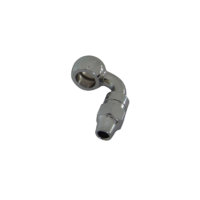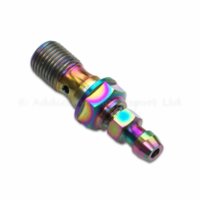Wow! Great info on this topic in a pretty short period of time. The 3D Printer info was really interesting. Once a proto is set up and (someone) starts production, I hereby re-confirm I am in. I also have a friend with an NC machine business if that would be helpful.
Based upon an earlier post, felt I should explain my shorthand math:
To calculate that ratio you must first calculate the surface area of the piston. You can't just compare the bore sizes.
That is correct; and the examples/numbers I generated are based upon this premise.
Using the D1=12.9mm and D2= 28mm, what we need is A1/A2 (Area 1/Area 2). Everyone knows Pi = 3.14; actually, a little more, but 2 decimal places is fine for us - this ain't the Space Shuttle - actually, guess I can't say that anymore - there ain't no Space Shuttle no more....

But I digress...
So...
A1= PiR^2. PI =3.14, R1= 12.9/2= 6.45. Therefore PiR^2 = 3.14*6.45*6.45 = 130.6.
A2 therefore = 3.14*14*14 = 615.4
A1/A2 therefore = 130.6/615.4 = 0.21. Amazing, huh?
And you get there like this:
A1/A2 is equal to 3.14*R1^2/3.14*R2^2, if you cross out Pi (3.14) on the top and bottom, then A1/A2 = R1^2/R2^.
But as hydraulic components are (mostly) measured in diameters, its a lot easier to work in those terms. We know that Diameter = 2x Radius. So D1=2R1. But R1/R2 = 2R1/2R2, or 100R1/100R2, etc, etc. You just cancel our the constant #'s in the numerator and denominator (2, 100, etc). So as far as ratios are concerned, D1=R1. Which means that A1/A2 = R1^2/R2^2 = D1^2/D2^2.
But to make it easier to follow, calcing the ratios work best as I indicated:
(D1/D2) * (D1/D2), which gets rid of that pesky ^2 (squared) symbol.
Hope this has not been too pedantic, but the calcs can save a lot of trial and error. There are modifiers to the accuracy however, like lever free play... and the pressure plate hitting the engine cover would not be good.
As far as MC's, it would be handy to find something OE based and cheap on ebay? I'd be cautious of a smallish MC - it has to have/move enough volume to exceed the volume requirements of the slave. This also assume ZERO hydraulic hose wall expansion, which would also take up fluid.
Just my $0.02.

 My mistake was I took measurements of stroke of the operating arm, length of the operating arm and measurements of the pitch of the worm gear. I then used some trigonometry to calculate the amount of worm gear/push rod motion. That was in 2011, and I always meant to get back to it and use a dial indicator to get real numbers. Well only today did I get back to finally get real numbers.
My mistake was I took measurements of stroke of the operating arm, length of the operating arm and measurements of the pitch of the worm gear. I then used some trigonometry to calculate the amount of worm gear/push rod motion. That was in 2011, and I always meant to get back to it and use a dial indicator to get real numbers. Well only today did I get back to finally get real numbers.


 But I digress...
But I digress...